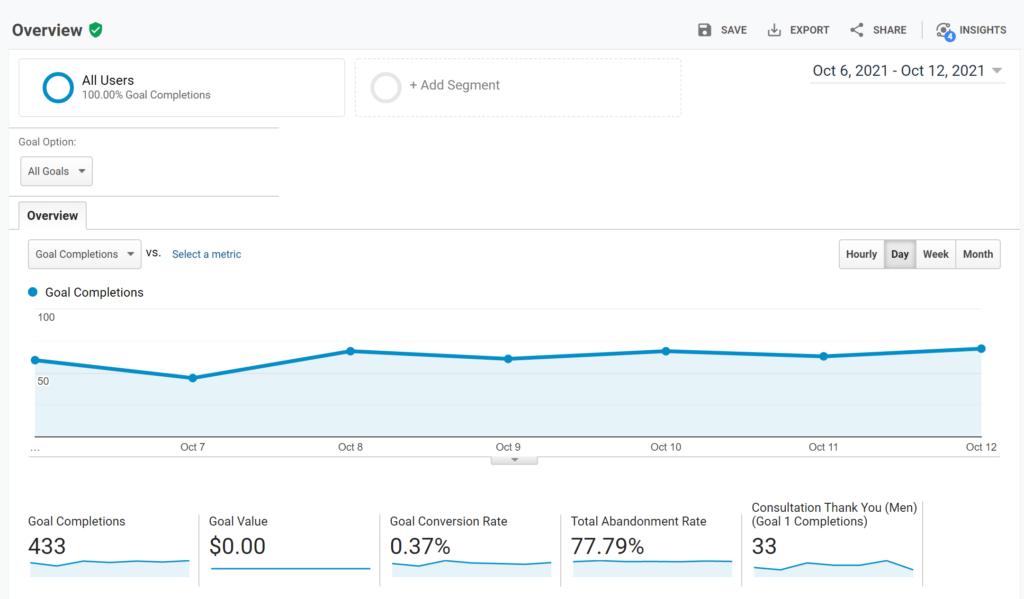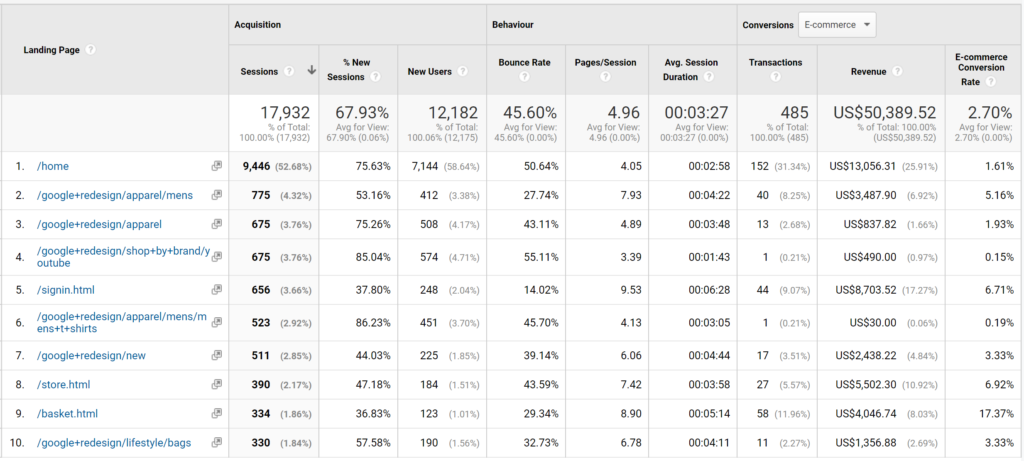What’s a conversion? What’s a conversion rate?
In this post I explain what they are, and why they are so important.
We constantly hear marketers talking about website conversions and conversion rates. But what are they?
It’s actually pretty simple.
Formula for conversion rate
A conversion happens when a visitor to your website does something that you (or your web designer) wanted them to do.
Ideally this would be them buying something from you, or maybe signing up for a subscription or even downloading an eBook in return for their email address.
The conversion rate is the proportion of total visitors to your website who do that thing that you want them to do.
So if 500 people visit your site and 15 of them buy your product, your sales conversion rate would be:
(15/500) x 100 = 3%
To express this as a formula, it would be:
(total conversions / total visitors) x 100
Why is your conversion rate so important?
Your website conversion rate is arguably the most important thing for you to measure, as it’s an ideal barometer of your company’s profitability.
It’s scary the number of business owners who don’t know what their sales conversion rate is. That is, what proportion of their overall website visitors go on and actually buy from them.
Having knowledge of this simple metric can help you maintain control of your business’s health.
Analysing your conversion rates is a great way to identify where your business is having problems.
It could be that your content isn’t resonating with your visitors.
Or it could be that the user journey through your sales funnel is confusing.
Be careful not to look at your conversion rates in isolation, though. You’ll need to bear in mind other metrics like bounce rate, exit rate, average session duration and page views per session too.
Lots of marketers focus on driving more and more traffic to their site to increase sales revenue and profits. However they neglect the activities required to convert that traffic into leads and paying customers.
What is a good conversion rate?
A question I get asked probably more than any other is ‘what is a good conversion rate?’.
There’s no real straight answer to this, but it generally depends on context.
If you only sold 1 product last year and this year your conversion rate increases by 100%, you’re still only selling 2 products.
However, if you sold 5,000 products last year and your conversion rate goes up by 3%, this year you will have sold an additional 150 products.
Some digital marketing experts say that as long as your conversion rate keeps going up, then that’s all that matters.
You also need to take into account any external factors when you are tracking conversion rates – such as changes in price, advertising campaigns or seasonality, as these can all have an impact.
Macro and micro conversions
Conversions are often split into macro conversions and micro conversions.
Macro conversions are ones that have the biggest impact on revenue, and tend to be at the end of the funnel.
Micro conversions are smaller conversions that tend to happen nearer the top of the funnel and contribute towards the final macro conversion.
An example of a macro conversion might be a customer buying your product, or a visitor to your website becoming a lead.
A micro conversion might be a visitor clicking on a call to action button on your homepage, and landing on your product details page.
How to measure your conversion rate
There are a number of reports you can refer to in your analytics program that will let you track your website’s conversion rate.
If you use Google Analytics, and you already have goals set up, you can go to your goal report:

- Log in to Google Analytics
- In the left menu, go to Conversions > Goals > Overview
- This will give you a top level view of the average conversion rate of all your goals. If you have more than one goal, you can also view the rate for each specific goal.
- There is also other important information in this section that can help you analyse your traffic and conversions:
• Goal URL: This is the URL of the page where your visitors actually converted.
• Reverse Goal paths: This report shows how visitors are arriving at your goals. It’s really handy for seeing which of the pages on your site are the most successful at converting.
If you have an ecommerce website, and you have Ecommerce tracking set up in Google Analytics, you can go to the Overview in the Ecommerce report within Conversions.

Here you’ll be able to see your Ecommerce conversion rate.
This is the percentage of sessions that resulted in an ecommerce transaction – or in other words, a sale.
There are a number of other really useful reports in Google Analytics that will let you dig into the weeds, and will reveal the effect that different factors have on your conversions.
These include:
- By browser
In Google Analytics, go to Audience > Technology > Browser & OS.

- By device
For this report, go to Audience > Mobile > Overview.

- By high bounce/low converting landing pages
In GA, go to: Behavior > Site Content > Landing Pages. From the second dropdown select Ecommerce Conversion Rate.

- By screen resolution
To access this report, go to: Audience > Technology > Browser & OS, and then click on Screen Resolution as the Primary Dimension.

- By traffic source
You can find this report at: Acquisition > All Traffic > Channels.

Conclusion
Knowing how well your website traffic is converting into paying customers is critical. Without this knowledge you could well be scrambling around in the dark.
By using website analytics reports like the ones I’ve outlined above you can keep on top of how your website’s conversion rates are doing – and if there are any big fluctuations you’ll be able to look into what might be causing them.
What marketing activities have you carried out that have resulted in an increased conversion rate?


